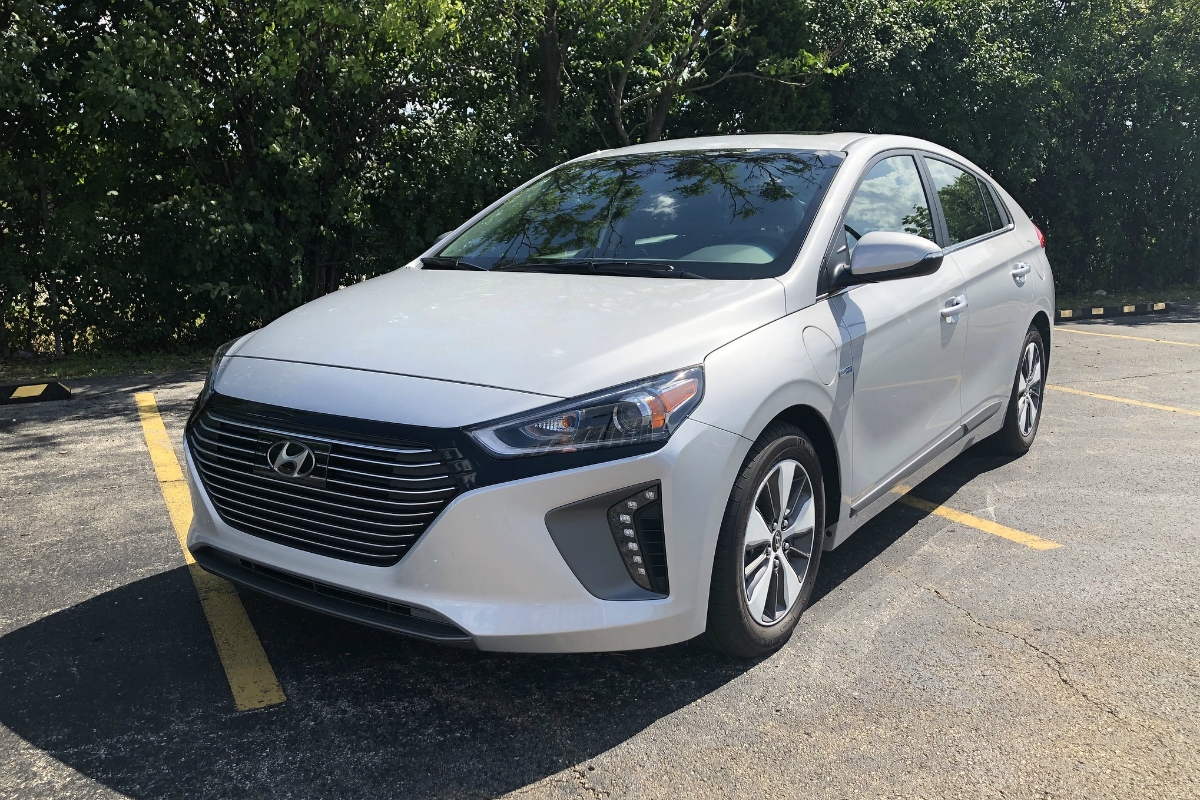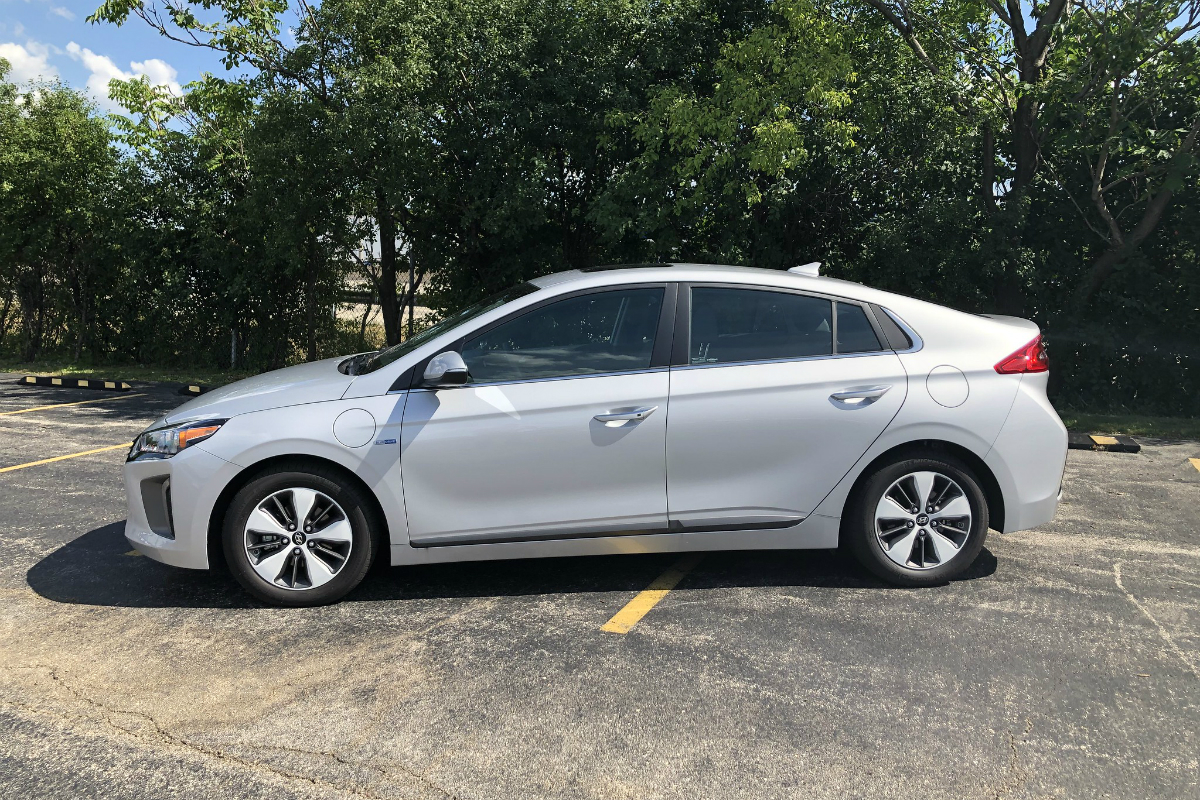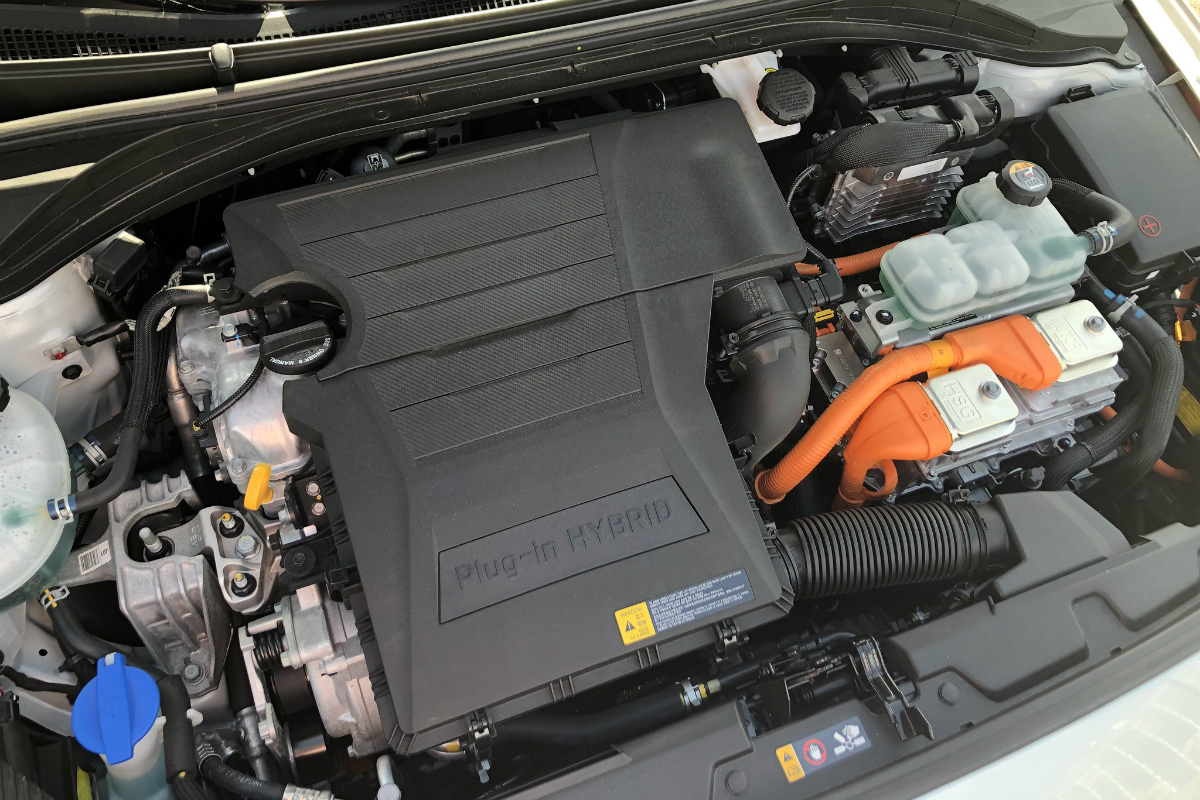2019 Hyundai Ioniq PHEV

Sometimes, it is not enough to have a hybrid car to drive.
The number of PHEVs is growing across several classes of vehicles. It offers the opportunity to charge up the battery, while adding a gasoline engine for more driving range overall. It strikes the balance from mere hybrids with full-battery electric vehicles.
One of those plug-in hybrid models available across the country is the Hyundai Ioniq. This compact hatchback is also available in a regular hybrid as well as a full electric vehicle. Recently, we had the chance to drive the Ioniq PHEV in the top-of-the-line Limited trim

The Ioniq is actually quite handsome for a compact hybrid hatchback. The front end looks like most of the latest Hyundais out there – a familiar face that does not look out of place or too futuristic. The side profile is what you'd expect from a sustainable automobile, even without the rear quarter glass beyond the rear door. The rear end shows off a split rear window with handsome taillights. Our PHEV Limited tester had 16-inch alloy wheels that looked the part of being sustainable.
As we mentioned before, this is one of three propulsion systems available on the Ioniq. There are just some slight distinctions between all three. The rear badge will tell which one. In our case it is the one that says “plug-in.” Then, there’s the door on the front driver’s side fender that opens up to a plug port for up to Level II charging.

In comparison to other Hyundai models, the cabin simply looks normal. You have Hyundai-familiar switchgear, readouts, and features. The instrument cluster is a bit different, with a center speedometer dial with a drive range readout inside of it. With an energy meter and warning lights on the left side of the big dial, the right side is customizable for various information. The fuel gauge is on the bottom of the big dial, while the battery level gauge is on the extreme right. In all, it is a mix of familiar Hyundai readouts put into a specific hybrid format. There is an actual transmission shifter in the console – positioned where it should be. This is not to make light of other hybrid automobiles, but the idea of creating a hybrid-specific vehicle that has familiar controls is something refreshing and cause of celebration.
The seats offer great size and comfort. The bolstering was there, but the cushion felt pretty flat. We had no problems whatsoever with these seats, Rear seat room is OK, with ample head and legroom for average-sized adults. Cargo space is quite good, though the cargo cover is low to accommodate the lower window panel. The Ioniq had plenty of room to spare between the rear seat and rear cargo hold.

Powering the Ioniq PHEV is a hybrid gas-electric driveline that bucks the trend seen on its rivals. It starts with a direct-injected 1.6-liter four-cylinder engine, combined with a 44.5 kW electric motor. In all, the net horsepower is 139. Both motors are fed to a six-speed dual-clutch transmission – which could be seen as out of place on hybrid drivelines. For this particular driveline, it works well enough for ample response to both motors. Everything goes down to the front wheels for traction and drive.
As with all plug-in hybrids, the electric motor gets first priority in powering the Ioniq when there is juice in the battery. A fully charged battery is good for up to 29 miles. In terms of fuel economy, Hyundai states you can average 52 MPG in combined driving on gasoline alone, with up to 115 MPGe combined with electric-only driving.

In driving the Ioniq Hybrid, do not expect it to be as sporty as it looks. It is a pretty solid ride with soft, but exacting handling. Yet, it is light for a compact PHEV, weighing in at 3,417 pounds. Perhaps it is the steering, that is truly light to use. It also helps to have a multi-link suspension out back to help keep the small hatchback on track through the corners. With a light steering, it has fine control with a good turning radius and nice feedback from the road. Brakes are also good with excellent pedal feel, along with solid stops in normal and panic situations.
Ioniq pricing starts at $20,650 for the high-efficiency Hybrid Blue model. Plug-In models start from $25,350 for a base model. Our fully-loaded PHEV Limited tester came with a sticker price of $33,335. If you wish not to use any gasoline, the Ioniq Electric is available, starting at $30,315. In all, there are seven different Ioniq models across three different propulsion systems.

The Ioniq PHEV has only a few competitors, including the Kia Niro PHEV and Toyota Prius Prime. Hyundai also competes with other compact hybrid models, such as the Toyota Prius, and battery electric vehicles in its size class, which include the Nissan Leaf.
Why choose a Hyundai over other similar vehicles? One could point out the warranty and their rise in the initial quality charts. The Ioniq also wins on price, which will have consumers considering putting one on their shopping list.
Story Credits: CarSoup Editors
